Agile development has revolutionized software development by prioritizing flexibility, efficiency, and customer satisfaction. Understanding the core tenets of Agile frameworks is crucial for businesses and teams aiming to enhance their development process. Whether you’re sprinting with Scrum, flowing with Kanban, or pushing the extremes with XP, the goal remains the same: delivering value with agility.
Scrum Roles
1. Scrum Master:
- Overview: The Scrum Master is a facilitator ensuring that the Scrum team adheres to Agile principles and practices.
- Responsibilities: Removing obstacles, facilitating meetings, and ensuring a smooth workflow.
2. Product Owner:
- Overview: The voice of the customer within the team, responsible for defining and prioritizing features.
- Responsibilities: Maintaining the product backlog, setting priorities, and making decisions on features.
3. Development Team:
- Overview: The individuals responsible for delivering the product increment.
- Responsibilities: Collaborating on tasks, deciding how to turn the backlog into a working product.
Scrum Events
1. Sprint:
- Overview: A time-boxed iteration during which a product increment is created.
- Activities: Sprint Planning, Daily Scrums, development work, Sprint Review, and Sprint Retrospective.
2. Sprint Planning:
- Overview: A meeting to decide what can be achieved during the sprint.
- Activities: Selecting items from the product backlog and creating a sprint backlog.
3. Daily Scrum:
- Overview: A daily stand-up meeting for the development team.
- Activities: Each team member answers three questions: What did I do yesterday? What will I do today? Any obstacles?
4. Sprint Review:
- Overview: A meeting at the end of the sprint to inspect the increment and adapt the backlog.
- Activities: Demonstration of the work done and discussion on what to do next.
5. Sprint Retrospective:
- Overview: A meeting after the sprint review to reflect on the past sprint.
- Activities: Discussing what went well, what could be improved, and planning adjustments for the next sprint.
Scrum Artifacts
1. Product Backlog:
- Overview: An ordered list of everything that might be needed in the product.
- Usage: Maintained by the Product Owner and constantly updated.
2. Sprint Backlog:
- Overview: The set of product backlog items selected for the sprint.
- Usage: Developed by the development team during the Sprint Planning meeting.
3. Increment:
- Overview: The sum of all the product backlog items completed during a sprint.
- Usage: Inspected at the Sprint Review and should be in a usable condition.
Key Agile Practices
1. User Stories:
- Overview: Concise descriptions of a feature, told from the perspective of the end-user.
- Purpose: Expresses requirements and prioritizes features based on their value to the user.
2. Sprint Planning:
- Overview: A collaborative event where the team decides what work can be achieved during the upcoming sprint.
- Purpose: Establishes a shared understanding of the work to be done, creating a plan for the sprint.
3. Daily Stand-Ups:
- Overview: Short, focused meetings where team members discuss their progress, plans, and any obstacles.
- Purpose: Enhances communication, identifies and resolves impediments quickly, and keeps the team aligned.
4. Retrospectives:
- Overview: Reflective sessions at the end of a sprint to discuss improvements.
- Purpose: Drives continuous improvement, fosters a culture of learning, and ensures the team evolves with each iteration.
5. Backlog Refinement:
- Overview: Involves regularly reviewing and refining the product backlog.
- Purpose: Ensures the backlog is prioritized, detailed, and ready for the next sprint planning.
6. Pair Programming:
- Overview: Two developers work together at one workstation, with one typing (the driver) and the other reviewing (the observer).
- Purpose: Enhances code quality, promotes knowledge sharing, and mitigates the risk of individual errors.
7. Continuous Integration:
- Overview: Developers integrate their work frequently, usually multiple times a day.
- Purpose: Helps detect and fix integration issues early, ensuring a more reliable and cohesive codebase.
8. Burndown Charts:
- Overview: Visually represents the work completed versus the work remaining in a sprint.
- Purpose: Offers a quick, visual way to track progress and make data-driven decisions during the sprint.
9. Cross-Functional Teams:
- Overview: Teams include individuals with diverse skills necessary for end-to-end product development.
- Purpose: Promotes self-sufficiency, faster decision-making, and a holistic approach to problem-solving.
10. Incremental Delivery:
- Overview: Involves delivering parts of the product in smaller, usable increments rather than waiting for the entire project to be completed.
- Purpose: Provides value to users sooner, allows for quicker feedback, and reduces time to market.
Conclusion
Agile methodologies provide a structured yet flexible framework for software development. By embracing roles like the Scrum Master and Product Owner, adhering to Agile ceremonies, and implementing key practices like continuous integration and incremental delivery, teams can significantly enhance efficiency and deliver high-quality products. The essence of Agile lies in adaptability, collaboration, and continuous improvement, ensuring teams remain resilient and customer-focused.
Frequently Asked Questions (FAQs)
Q1: What is the main difference between Scrum and Kanban?
Scrum is a structured framework with defined roles, events, and artifacts, while Kanban focuses on visualizing workflow and optimizing efficiency without time-boxed iterations.
Q2: How long should a Sprint last?
Typically, a sprint lasts between one to four weeks, with two weeks being the most common duration.
Q3: Can Agile be used outside of software development?
Yes, Agile principles are applied in various industries, including marketing, manufacturing, and project management.
Q4: What is the ‘Definition of Done’ in Agile?
It is a checklist of criteria that must be met before a user story or feature is considered complete.
Q5: How do you handle changes in requirements during a sprint?
Scrum advises against mid-sprint changes. However, changes can be added to the product backlog and prioritized for future sprints.
By understanding Agile’s principles and best practices, teams can navigate the complexities of product development with confidence, ensuring consistent delivery of high-value software solutions.






